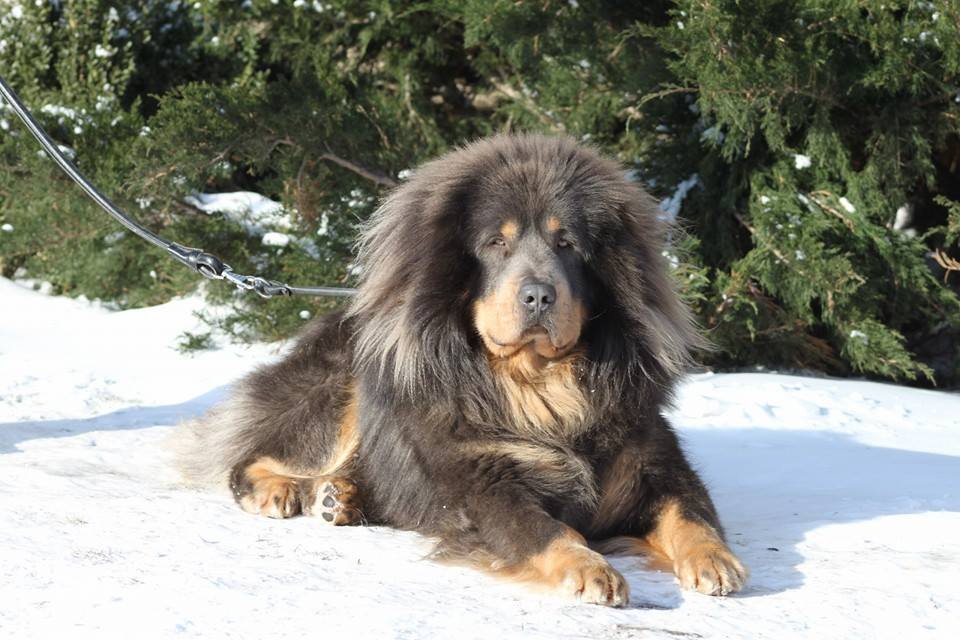For this month’s Dog Breed Corner, we cast a spotlight on the Most Expensive Dog in the World: the Tibetan Mastiff. Learn about the Tibetan Mastiff’s history, temperament, living needs, trainability, and more!
 Quick Facts ✔
Quick Facts ✔
Height – 61 – 76 cm
Weight – 34 – 73kg
Lifespan – 10 – 14 years
Country of origin – China
Breed type – Guard Dog
- Families without children
- Owners with large homes
- Morning people
- Firm Owners
Breed History ♜
While written accounts of this breed only date back to the 19th century, they’ve been around for much longer. In fact, research suggests versions of this breed has been roaming the plateaus of Tibet for around 5,000 years. For most of the Tibetan Mastiff’s history, they’ve served as guard dogs for temples, shepherd flocks, villages, and nomadic tribes. With their guardian instincts and titanic bulk, these high-altitude dogs were able to fend off predators ranging from bandits to snow leopards. The breed didn’t earn the title of “Tibetan Mastiff” until after 1873, when the England Kennel Club coined the term.
Interestingly, the Tibetan Mastiff isn’t a mastiff at all. Rather, English breeders named it so for its mastiff-like size. In practice, the Tibetan Mastiff is more closely related to large mountain dogs.
These days, this super-sized staffy is bred and kept in many western countries, including Australia.
Personality Traits, & Trainability ★
At a glance, the Tibetan Mastiff has a lot in common with the lion. They’re huge, they sport a bushy mane, and when they roar, they could make Liam Neeson flee in terror. However, the likeness is more than skin-deep. They’re wary of strangers, they don’t back down from a challenge, and they’re fiercely protective of their family. These traits make them appealing – but please consider whether this breed is right for you before before bringing one home. The Tibetan plateau is now home to countless Mastiffs who were cast aside by Owners who couldn’t handle them.
As we mentioned, the Tibetan Mastiff is a brilliant guard dog, as they’ll fight tooth and nail to defend their homes. If you enjoy hosting people in your home, though, you may have a problem. The Tibetan Mastiff can treat any strange houseguest as an intruder, which can put your friends in danger. Even after they’ve seen their Owners warmly welcome a guest, they can still remain on edge.
It’s for this reason they can pose a hazard for children. While they’ll be loving and gentle with human children from their Owner’s family, they can lash out at other kids. For parents who host playdates for their children, this can pose an issue. To train your Tibetan Mastiff to be more stranger-friendly, socialise them around dogs and humans from an early age.
Thanks to their size, the Tibetan Mastiff isn’t the best candidate for agility training. However, they do enjoy a good long walk. They’re at their most active in the morning and evening, so try walking them first and last thing. Just ensure you change their walking route – if they always take the same journey, they’ll think they’re on guard patrol. After this, you can expect them to bark at every stranger they pass!
Living Conditions ⌂
You may have already guessed this by now, but the Tibetan Mastiff isn’t suited to apartment living. As they’re programmed to patrol their territory, they’ll be happy in a large house with a yard. However, if you leave them outside during the day, they’ll “do their job” and bark whenever something passes them by. To save your neighbours from a day of barking, leave your Tibetan Mastiff indoors when you’re out. Since they hail from frosty Tibet, you’ll also want to give them plenty of water on a hot day.
Fun Fact ♥
This breed holds the world record for the most expensive puppy ever sold: a whopping $2.2 million. The pricey puppy was purchased in 2014 in China, where the nouveau riche view them as furry status symbols.
Speaking of China, remember how we wrote that this breed shares much in common with the King of the Jungle? Well, we’re not the only ones to think so. In 2013, a Chinese zoo kept a Tibetan Mastiff on display, trying to pass it off as an African lion!

